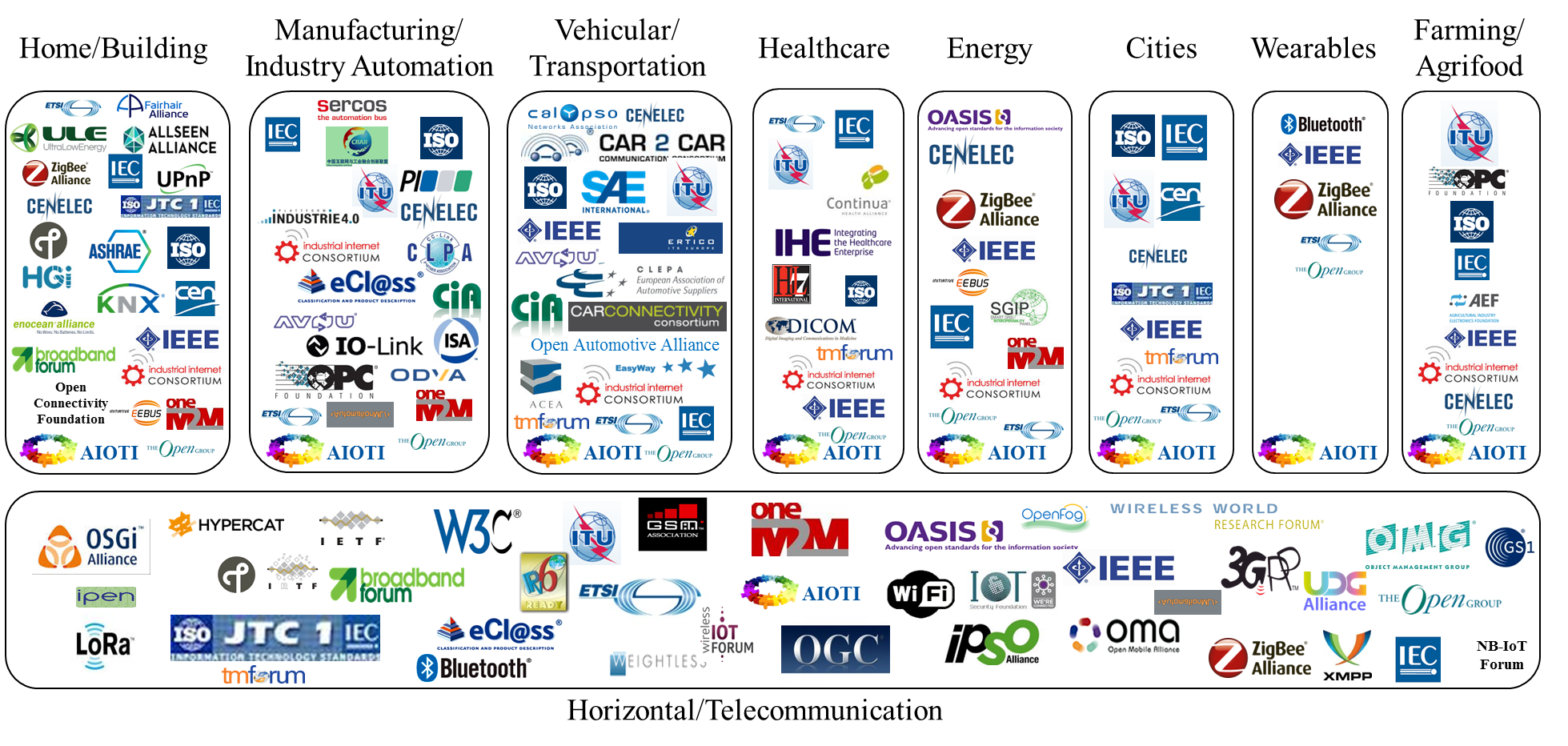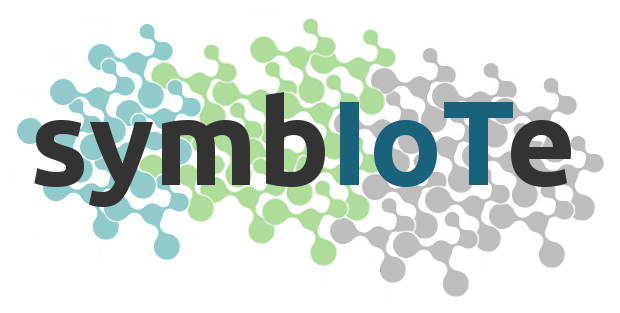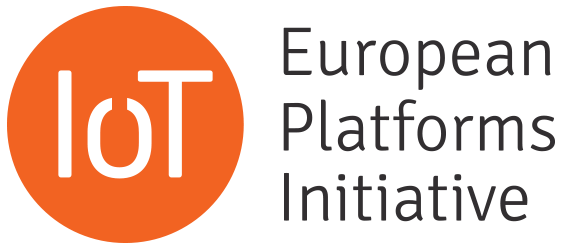Through symbIoTe we have observed the IoT standardization landscape for the last two years with the goal of understanding which standards can be useful in our design decisions, or which standard developing organization (SDO) was working on our same research topics.
While we found many valuable contributions that helped us in our API design and even in the semantic models for our interworking concepts, more and more we got the feeling that there is something missing in the standardization landscape.
Let me start from the beginning.
The standardization gaps.
With the impressive rise of the IoT paradigm, almost all SDOs hurried to establish IoT working or interest groups. ETSI published such a gap analysis [ETSI TR 103 376 V1.1.1 (2016-10)], where they identified 6 main gaps:
- GAP 1. Duplication of IoT architectures and models.
- GAP 2. A large number of communication protocols address heterogeneous types of communication requirements.
- GAP 3. Data models are developed on a proprietary basis and mostly specific to the vertical domains to which they apply.
- GAP 4. Processing rules and decision-making processes under the reception of sensor data lack harmonization.
- GAP 5. Security and privacy are addressed on an isolated basis for part of the applications.
- GAP 6. Ease of use and of maintenance after purchase would require a more global approach.
I think that such findings, or very similar ones, must have motivated most of the SDOs, because these are the areas, the SDO working groups have now been working for some time. The European Alliance of IoT Innovation (AIOTI) has published a quite impressive landscape image.

The figure above shows the “IoT SDO and Alliance Initiatives Projection on Vertical and Horizontal Domains” and was taken from the public AIOTI report on IoT Standards landscape and future evolutions. It shows that the areas for the major application domains are densely populated by several SDOs and industrial or public alliances.
In my opinion, this image shows two very critical drawbacks for the future IoT standards. Firstly, there are too many players on the field. The SDOs are mostly independent and there is little reuse between them, and to some extent they are competitors in the race of being the first and most relevant.
IoT fragmentation.
The traditional thinking in verticals fosters the IoT fragmentation. The most advanced standards are the ones that limit their scope to a certain domain. The ones that are aiming for broader application applicability are more like reference- or meta-architectures. That means more generic and less concrete, and thus more like guidelines and less like an implementation standard.
Do not get me wrong. I think it is good and even essential to have communities defining their application domains and agree on common standards. That is just the first step into a well-structured and well-connected IoT standardization world.
Isn’t IoT all about connection application domains?
You can ask two IT experts how they understand IoT and you will get three answers. As we understand IoT it is about a ubiquitous connectivity (this is where the ‘Internet’ goes) of essentially all possible kind of things (and not human-to-human or even human-to-machine). In this definition, true power comes from “universality”. It is about connecting “things”, whatever background they may have, to other “things” which have potentially completely different application setups. This requires the ability to describe “things” in a semantically rich manner, in order to interpret them, even when their context information is unknown. In addition, the communication capabilities of “things” need to overcome the boundaries of individual application domains.
This is a true challenge and only few SDOs are currently working on that. One of them is the W3C Web of Things Working Group. They introduce their objectives with this statement:
“The Internet of Things (IoT) suffers from a lack of interoperability across platforms. As a result, developers are faced with data silos, high costs, and limited market potential. This can be likened to the situation before the Internet, when there were competing non-interoperable networking technologies. The Internet makes it easy to develop networked applications independently of those technologies. The W3C is seeking to do the same for the Internet of Things with the Web of Things.”
That work has started and standards are not yet available. The symbIoTe mission is very similar, and while we are not a standard developing group, we have developed an open source framework that solves some of these challenges. It will be interesting to see, how both approaches are going to evolve and maybe even merge.
A final thought on interoperability across platforms.
With the current standard approaches, it is an obligation of applications to understand a foreign “thing”. Translation is required if a foreign “thing” implements a different information model, than the using application, The IoT community, within the Internet Engineering Task Force (IETF), are discussing a “red star” gateway model to solve that issue. In that concept, the “red star” is a kind of “super model”, defining the links between connected platforms. Moreover, everybody would like to see his own model become a “red star”.
The symbIoTe approach to this problem is the translation rule between peer-to-peer connections. The idea is quite simple: If two IoT platforms are using “things” with different concepts, but they have a common shared aspect, the integration framework will have a semantic mapping rule, which can translates for the platforms. The big advantage with that is that none of the IoT platforms needs to be burdened with interpretation logic for foreign concepts. In addition, the integration framework can learn. Today, the experts in this matter can provide such rules. In the future, derivation of such rules will be a job for machine learning.
This brings up the discussion on the “number of required connections”. Like if you have a federation of IoT platforms, and each platform wants to talk with each other platform, either they have to speak the same language, or each platform has to speak the language of each other platform. Speaking just one language would be great, but that requires the one and only dominating standard for each IoT platform within each application. This is technically and organizationally extremely hard to achieve. Speaking each other’s language is also very hard to archive, but the trick is, let the symbIoTe framework do the hard stuff.
Reinhard Herzog, IOSB Fraunhofer
Task leader for Standardization in symbIoTe project


 This project has received funding from the European Union's Horizon 2020 research and innovation programme under grant agreement No 688156
This project has received funding from the European Union's Horizon 2020 research and innovation programme under grant agreement No 688156